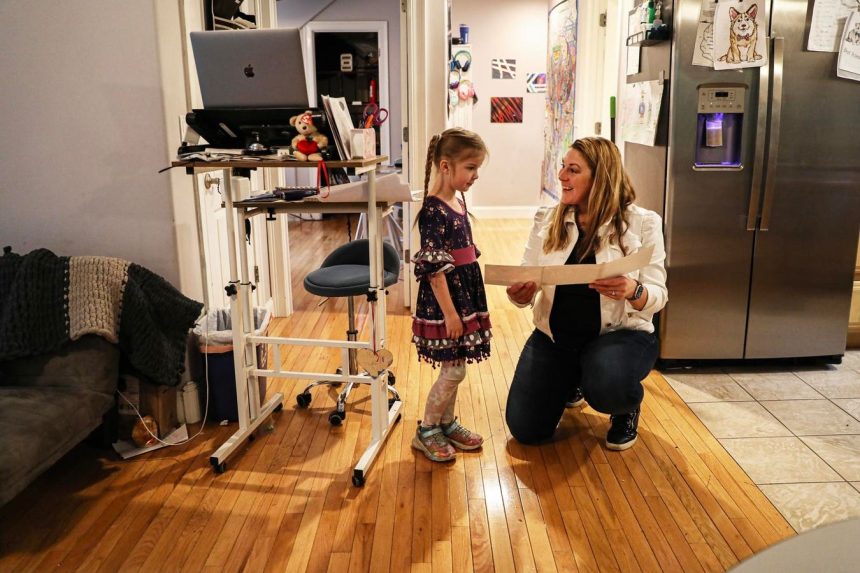Every few years it seems that hype grows around the possibilities of unbundling education. The latest fuel is the emergence of at least 14 states with education savings accounts (ESA) programs that allow families to pay for a variety of educational programs and supports from public funds.
As a recent article in Education Next, where I’m an executive editor, proclaimed, “While parent-led unbundling is not a new phenomenon, the current movement has expanded so quickly that it’s been dubbed ‘the Great Unbundling’ of K–12 schooling.”
But we should be cautious about such grand statements. Good theory on innovation can help us parse out the hype from what’s likely to play out.
First, in favor of the argument that we will see more unbundling, despite the media’s conflation of ESAs with vouchers, there is a substantial difference between the two that can drive unbundling.
A voucher allows an individual to use a set amount of funds on one specific service, in this case tuition at a private school. Think of it more like a ticket. The voucher can’t be separated into smaller, discreet parts. As a result, the consumer doesn’t have much incentive to think about things like cost-quality tradeoffs and value below the amount of the voucher. They don’t benefit from spending less than the value of the voucher. They use the voucher to get access to a school, and then it’s done.
An education savings account, on the other hand, deposits funds into an account that a family controls. Like a bank account, they can use the money in a variety of ways. They don’t have to spend it all in one place. They can decide to spend on a microschool with limited offerings that costs less than the funds available in the account because they know they’ll have other funds remaining to spend on other services like tutoring, enrichment activities like music or sports, specific academic programs, or even tickets to SeaWorld akin to a school field trip. As a result, they have lots of incentive to think about cost-quality tradeoffs and to consider a broader universe of education possibilities that transcend schools. Families can theoretically even decide not to spend all the money deposited in the account in any given year and save the money for future purchases or investments in a child’s education. Much as is the case with the emerging research around income stipends such as the Chelsea Eats Program, although the funds come from a third party—in this case the government—the money now belongs to the families; they are able to break it out as they need to support their needs and specific circumstances.
At the same time, just because families have the option to spend on a variety of educational services and unbundle schooling, doesn’t mean they will choose to. A good theory—the theory of interdependence and modularity—helps illustrate why. It casts cold water on the notion that this will be the “great unbundling of school” rather than a “relative unbundling.”
In every industry, the early successful products and services often have an interdependent architecture—meaning that they tend to be proprietary and bundled. The reason is simple: when a technology is immature, to make the products good enough so that they will gain traction, an organization has to wrap its hands around the system architecture so that it can wring out every ounce of performance.
As a technology matures, however, it eventually overshoots the raw performance that many customers need. As a result, new disruptive innovations emerge that are more modular, and customers become less willing to pay for things such as raw functionality and increased reliability. Instead, they start to prioritize the ability to customize a product to their individual needs at an affordable price. Customizing a bundled service is expensive because it forces a full redesign of the underlying system architecture, but customizing a modular offering is affordable because it is merely a matter of mixing and matching discrete parts that fit together in well-understood ways.
To believe that unbundling will occur en masse, one also must believe that schools have overshot what families desire in terms of functionality and reliability.
On the one hand, that’s likely what’s driving some families to cobble together a variety of educational offerings.
Strange as it may sound, there are some families that are overserved by today’s schools. They don’t need the full “bundle” that many traditional schools offer: the full sets of meals, the extended hours, the broad range of classes, and the many athletic, arts, and other special offerings. They can’t possible take full advantage of all these offerings—and they don’t want to. They instead want to customize for their children’s specific needs or interests. Imagine opting for a truly great musical education coupled with a la carte academic offerings from Outschool, or enrolling a child in a full-time virtual school so that they can prioritize their development as an athlete. Or so that they can double down on the academic program that has grabbed their interest.
We were seeing more unbundled schooling offerings emerge before the pandemic, but COVID accelerated the interest in these arrangements. More families realized that they had specific preferences for their children’s schooling and have sought customized offerings.
But many more families still rely on the bundle and don’t feel like schools are overshooting at all. Indeed, they feel underserved by schools, and want something better. They might want even more of the bundle—more childcare, more services, more food, more learning.
More generally, because in the early years of an industry customers are willing to tolerate the product standardization that bundled offerings mandate because customization is prohibitively expensive, differences in usage patterns—and therefore customers’ individual needs—are not obvious during this stage of an industry’s evolution. People are generally willing to conform their expectations and their behavior to accommodate use of the standard product.
In other words, because of our nation’s long history with schools, it’s not as obvious to most families (the demand side) or many educational suppliers (the supply side) just how to think about the progress that different students and families desire beneath the level of schools; how to present and talk about those educational offerings that transcend the context of “school”; and how to ensure that unbundled offerings still lead to a desired level of coherence such that students learn the needed levels of background knowledge necessary to advance in their academic lives and develop fully the habits that will be important to prepare them for their futures.
Said differently, because most kids in America have gone to school for a long time, it’s just easy to keep talking, thinking about, and choosing schools.
And that’s what it appears most families that have availed themselves of ESA options are still doing: choosing a school first, and then filling in some educational offerings around the margins.
According to data from Florida’s ESA usage in 2019-20, for example, 80% of the funds were used to pay for tuition and fees, with the remaining going to instructional materials (roughly 11%), specialized services, and tutoring. That resembles the “customize the last 10 percent” approach Christy Wolfe wrote recently about when reflecting on the “Chipotlification of education.”
But, as families gain more experience with an ESA and the possibilities of unbundling and opportunities for customization, behavior changes. According to a 2021 EdChoice research paper, “the longer students remain in the program, the share of ESA funds devoted to private school tuition decreases while expenditure shares increase for curriculum, instruction, tutoring, and specialized services.”
In other words, as families gain a deeper understanding of their needs and get more comfortable with customizing their education, they are more willing to unbundle it appears. That also echoes Kris Comeforo of Outschool.org’s on-the-ground findings serving families in Detroit. He found that the presence of money alone in an ESA was unlikely to cause families to spend on different educational services. Information and social reassurance from those who had experienced the service were generally critical ingredients as well.
My takeaway is that we shouldn’t expect an unbundling of school to happen en masse or right away. Instead, we should expect greater unbundling in schooling relative to what we’ve had. That’s a step forward for customization, given that we didn’t have much unbundling before at all.
Read the full article here









